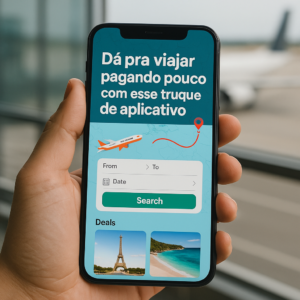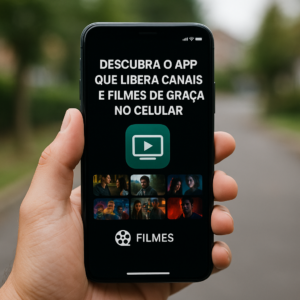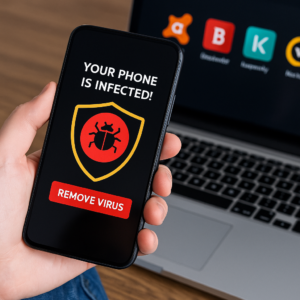Accessibility in Virtual Events: Make Your Events Inclusive
17 million people in Brazil have some kind of disability, which is 81% of the population. This shows the importance of making accessible online events. The accessibility in virtual events can be achieved with subtitles, transcriptions and interpretation in Libras. This helps to ensure equal opportunities for all.
To improve accessibility, it is essential to use assistive technologies. This includes enlarging the screen and having automatic captions. It is also important to use images described on social media and hire LIBRAS translators. These actions help to make online events more inclusive.
THE accessibility in virtual events is crucial for the digital inclusion. It ensures that everyone has equal access to resources and information. Create accessible online events strengthens the brand image as inclusive. This attracts more customers and values diversity.
The Importance of Accessibility in Virtual Events
Accessibility is a fundamental right. It allows everyone to participate equally in online events. Using accessibility features and assistive technology, we create inclusive virtual environments. This way, people with disabilities feel comfortable and can actively participate.
Studies show that accessibility is essential for inclusion at events. It benefits not only people with disabilities, but also the elderly, pregnant women and parents with strollers. digital inclusion It is crucial to make online platforms and promotional materials accessible to everyone.
To do inclusive virtual events, it is important to use subtitles, sign language interpreters and spoken visual descriptions. In addition, it is vital to promote awareness and education about accessibility. With accessibility features and assistive technology, participants feel empowered and autonomous, being able to enjoy the event independently.
Brazilian law, Law No. 10.098/2000, requires the removal of barriers to improve the lives of people with disabilities. Therefore, using assistive technology and accessibility features is essential. So we created inclusive virtual events that meet all the needs of the participants.
Main Accessibility Barriers in Virtual Environments
THE web accessibility and the inclusive design are essential for everyone to be able to use online resources. Many virtual environments still have barriers that prevent people with disabilities from participating.
Some of the main barriers include the lack of subtitles, transcriptions and interpretation in Libras. There is also a lack of resources such as screen readers and magnification and contrast tools. This makes it difficult to navigate and use websites and online platforms.
Accessibility goes beyond following the law. It ensures that everyone can access and use online resources equally. Improving accessibility can increase audience reach, improving a company’s reputation and relationships with customers and employees.
Some statistics show the importance of accessibility:
- 80% of deaf people in the world face difficulties with written languages due to lack of access to education.
- Only 0.46% of the 21 million active domains in Brazil passed all accessibility tests.
- More than 99% of websites in Brazil exclude people with disabilities.
To overcome these barriers, it is crucial to invest in web accessibility and inclusive design. This ensures that everyone can access and use online resources equally. To achieve this, it is necessary to implement features such as captions, transcriptions and interpretation in Libras. It is also important to use accessibility tools, such as screen readers and magnification and contrast tools.
| Accessibility Features | Description |
|---|---|
| Subtitles | Text that accompanies the audio or video, allowing deaf people or hearing people in quiet environments to understand the content. |
| Transcripts | Text that reproduces the audio or video, allowing deaf or hearing people to read the content. |
| Interpretation in Libras | Interpretation of content in Brazilian Sign Language, allowing deaf people to understand the content. |
Assistive Technologies for Online Events
THE assistive technology is essential in inclusive virtual events. It allows people with disabilities to participate on equal terms. With it, the autonomy of people with disabilities increases, making the experience richer and more inclusive.
Studies show that 1 in 5 Brazilians has some kind of disability. This represents around 201,000 people. Therefore, it is crucial to use assistive technologies in virtual events to ensure accessibility and inclusion.
Screen Readers
Screen readers are vital for those with visual impairments. They allow you to access information in text format. It is important that documents are in accessible formats, such as PDF or Word, and not images.
Automatic Subtitling Systems
Automatic captioning systems are very important. They provide real-time captions for deaf and hard of hearing people. This makes virtual events more accessible and inclusive.
Magnification and Contrast Tools
Magnification and contrast tools help those with visual impairments. They allow you to adjust the screen for better viewing. These tools are essential to ensuring accessibility and inclusion in virtual events.
In conclusion, the assistive technology is crucial for inclusive virtual events. Using screen readers, automatic captioning systems, and magnification and contrast tools improves accessibility. This provides a rich and equitable experience for all participants.
| Assistive Technology | Description |
|---|---|
| Screen Readers | Allows visually impaired people to access information in text format |
| Automatic Subtitling Systems | Provide real-time captions for people who are deaf or hard of hearing |
| Magnification and Contrast Tools | Allow visually impaired people to adjust screen magnification and contrast |
Universal Design for Event Platforms
Universal design aims to create products and services that are accessible to everyone. This includes websites and apps that can be used by people with disabilities. accessible user experience is essential for everyone to be able to use the platform with ease.
To use inclusive design From the beginning, make sure everything is easy to understand and use. This helps reach more people, including those with disabilities. Technologies like screen readers and automatic captioning are very helpful in this process.

- Increased accessibility and usability of the platform
- Reduction of design and maintenance costs
- Improved user experience
- Increased effectiveness in design decision making
In conclusion, universal design is crucial for events that are accessible to all. By adopting inclusive design and accessible user experience, organizations improve the experience for all participants.
Essential Resources for Inclusive Virtual Events
For virtual events to be accessible, it is crucial to include features that help everyone participate. This means having captions, transcriptions, sign language interpretation, and audio description. These features are essential for inclusive events.
These resources help people with hearing or visual impairments participate in events. They also benefit those who prefer to learn through text or images. This way, everyone can feel included and valued.
Subtitles and Transcripts
Captions and transcripts are essential for virtual events. They allow people with hearing or visual impairments to understand the content. These can be live captions or pre-recorded transcripts.
Interpretation in Libras
Sign language interpretation is crucial for virtual events. It allows people who are deaf or hard of hearing to participate. Sign language interpreters translate the content in real time.
Audio description
Audio description helps people with visual impairments understand images and videos. A descriptive narration is delivered via audio, allowing everyone to see the visual content.
In summary, accessibility features are essential for inclusive virtual events. Subtitles, transcriptions, sign language interpretation and audio description ensure everyone’s participation. They benefit all participants, promoting inclusion and diversity.
| Accessibility Features | Description |
|---|---|
| Subtitles and Transcripts | Allows people with hearing or visual impairments to understand the content of the event |
| Interpretation in Libras | Allows deaf or hearing impaired people to communicate and participate in the event |
| Audio description | Allows visually impaired people to understand the visual content of the event |
Good Practices in Organizing Accessible Events
THE accessibility in virtual events It is essential to include everyone. To do this, it is crucial to adopt good practices. This involves creating an accessibility checklist, training the team and conducting usability tests.
An accessibility checklist helps you not to forget anything important. From choosing the location to assistive technology. Training staff is also vital so that everyone knows how to meet accessibility needs.
Accessibility Checklist
- Check the accessibility of the event location
- Ensure availability of assistive technology resources
- Offer accessible communication options, such as subtitles and sign language interpretation
Usability testing is crucial to accessibility. It helps identify and resolve issues. This ensures that the event is accessible to everyone.
Team Training
Staff training is essential. It ensures that everyone knows how to meet accessibility needs. Accessibility and inclusion training is important. Additionally, resources and support should be available to staff.
| Accessibility Features | Description |
|---|---|
| Subtitles | Text that accompanies the audio or video, helping to ensure accessibility for people with hearing impairments |
| Interpretation in Libras | Interpretation in Brazilian Sign Language, helping to ensure accessibility for people with hearing impairments |
To organize accessible events, it is necessary to follow good practices. This includes creating a checklist, training staff and conducting tests. It is also important to have assistive technology resources and accessible communication options. This way, everyone can participate. accessible online events.
How to Promote Inclusive Participation
THE digital inclusion is essential for everyone to be able to participate in virtual events. In Brazil, 17 million of people have some kind of disability, according to the IBGE. Therefore, it is crucial to have virtual events accessible to everyone.
To do this, it is important to think about web accessibility and digital inclusion in all aspects of the event. Using assistive technologies, such as screen readers, helps ensure that everyone can access the information online.
It is also essential to have accessible communication. This includes materials in Braille, videos in sign language and sign language interpreters. This way, everyone can communicate and participate in the event effectively.
Companies like Doity and Procter & Gamble demonstrate how to promote digital inclusion by adapting their events to meet the needs of people with different needs.
- Use legible signs and posters in Braille
- Offer affordable food options, such as vegan and vegetarian options
- Have sign language interpreters and assistive technologies available
- Ensure accessible communication, with materials in Braille and videos in Sign Language
When we promote inclusion at virtual events, everyone feels valued. This is crucial to creating an inclusive and accessible environment for everyone.
| Enterprise | Accessibility Initiative |
|---|---|
| Doity | Accessible event platforms |
| Procter & Gamble | Ads adapted for people with visual and hearing impairments |
| Ikea | Adaptive furniture products for people with motor difficulties |
Digital Accessibility Legislation and Standards
Web accessibility is essential for websites and apps to be accessible to everyone. In Brazil, laws and regulations such as the Brazilian Inclusion Law (LBI) and the Brazilian Standard ABNT NBR 17060 regulate this. They help ensure that websites and apps are inclusive.
These laws and regulations provide guidelines for the inclusive design. This makes websites and apps accessible to people with disabilities. web accessibility is crucial for equality and social inclusion.
Some of the main digital accessibility laws and regulations in Brazil include:
- Brazilian Inclusion Law (LBI)
- Brazilian Standard ABNT NBR 17060
- Decree No. 5296 of 2004
- Law No. 10,098
Developers and designers should be aware of and follow these laws. This ensures that their products are accessible and inclusive.
| Law/Standard | Description |
|---|---|
| Brazilian Inclusion Law (LBI) | Establishes guidelines for accessibility and social inclusion |
| Brazilian Standard ABNT NBR 17060 | Establishes requirements for digital accessibility |
Conclusion
THE accessibility in virtual events is essential for all event organizers online events. It is crucial to promote digital inclusion and follow practices of web accessibility. It is also important to have a universal design for platforms and ensure an accessible experience for everyone.
Follow good practices, how to use subtitles, interpretation in Libras and audio description, helps a lot. It makes online events more inclusive and accessible. This way, more people can participate, bringing diversity to the event.
Accessibility in virtual events goes beyond social responsibility and the law. It is a chance for brands to stand out. Showing commitment to digital inclusion, they gain visibility and connect better with the public.













